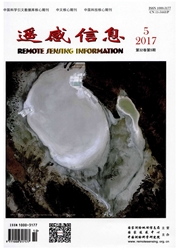

 中文摘要:
中文摘要:
GNSS反射信号(GNSS-R)遥感技术作为一种新型的遥感手段已经逐步发展起来。UK-DMC卫星接收机接收到的GNSS反射信号数据,是目前较为完整的一套GNSS-R星载数据集。本文介绍了UK-DMC上卫星接收机用到的关键技术并对其接收到的原始数据进行了系统的分析。论文首先利用一维多普勒功率计算公式以及时延-多普勒公式获得对应的相关功率矩阵,然后通过对陆地、海面和冰面的反射信号数据处理,做出对应的波形。最后分析了3种不同反射面的相关功率波形,发现在不同反射面条件下,反射信号的相关功率呈现不同的规律。结果表明:低轨道卫星接收到的反射信号可以用于反演地球表面土壤湿度、冰面厚度、海面风场等物理参数信息,此次试验为GNSS-R星载实验的开展提供了一套较为穖和全面的支持。
 英文摘要:
英文摘要:
As a new method of remote sensing,GNSS Reflection (GNSS-R)has developed rapidly.The reflected signal received by the receiver on the UK-DMC is a dataset of GNSS-R satellite research.This data is rare in this field.This paper introduces the key technologies used in the receiver and explains the data format of the raw data received.Firstly,it obtains the one-dimensional correlation power and two-dimensional correlation power taking use of the corresponding formula and gives out the figures in the different situations.It finds that the correlation power of different signals appear various laws.The results show that the reflected signals received from the low-orbit satellites can retrieve the physical parameters of the earth surface such as soil moisture,ice thickness,ocean wind,etc.This can provides a more comprehensive and systematic support for GNSS-R satellite experiments.
 同期刊论文项目
同期刊论文项目
 同项目期刊论文
同项目期刊论文
 期刊信息
期刊信息
